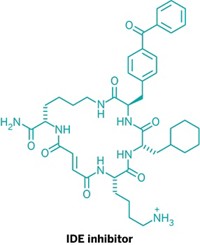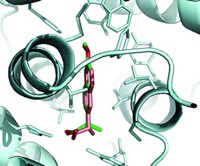Advertisement
Grab your lab coat. Let's get started
Welcome!
Welcome!
Create an account below to get 6 C&EN articles per month, receive newsletters and more - all free.
It seems this is your first time logging in online. Please enter the following information to continue.
As an ACS member you automatically get access to this site. All we need is few more details to create your reading experience.
Not you? Sign in with a different account.
Not you? Sign in with a different account.
ERROR 1
ERROR 1
ERROR 2
ERROR 2
ERROR 2
ERROR 2
ERROR 2
Password and Confirm password must match.
If you have an ACS member number, please enter it here so we can link this account to your membership. (optional)
ERROR 2
ACS values your privacy. By submitting your information, you are gaining access to C&EN and subscribing to our weekly newsletter. We use the information you provide to make your reading experience better, and we will never sell your data to third party members.
Biological Chemistry
Brainy Route To Prostaglandins
Pathway produces prostaglandins differently in the brain than elsewhere in the body
by Celia Henry Arnaud
October 24, 2011
| A version of this story appeared in
Volume 89, Issue 43
Prostaglandins are produced via a different pathway in the brain than elsewhere in the body, scientists report (Science, DOI: 10.1126/science.1209200). These inflammation mediators are made by cyclooxygenase (COX) enzymes using arachidonic acid as a precursor. Researchers have assumed that phospholipase A2 enzymes are the primary source of that arachidonic acid, but Daniel K. Nomura of the University of California, Berkeley; Benjamin F. Cravatt of Scripps Research Institute; and coworkers show that in the brain the enzyme monoacylglycerol lipase (MAGL) hydrolyzes the endocannabinoid 2-arachidonoylglycerol to produce the arachidonic acid used to make prostaglandins. Mice treated with a MAGL inhibitor produced less arachidonic acid and prostaglandins in response to the proinflammatory agent lipopolysaccharide. MAGL could be a good target for anti-inflammatory medications without the gastrointestinal effects of drugs that target COX enzymes, the researchers suggest. Lawrence J. Marnett, a prostaglandin expert at Vanderbilt University, says, “This work will rewrite textbooks on the biochemistry of prostaglandin generation in the brain.”




Join the conversation
Contact the reporter
Submit a Letter to the Editor for publication
Engage with us on Twitter